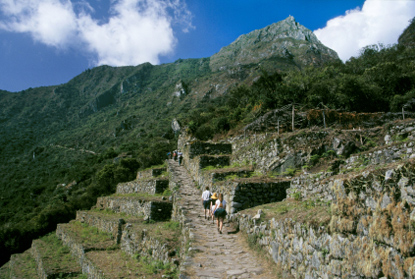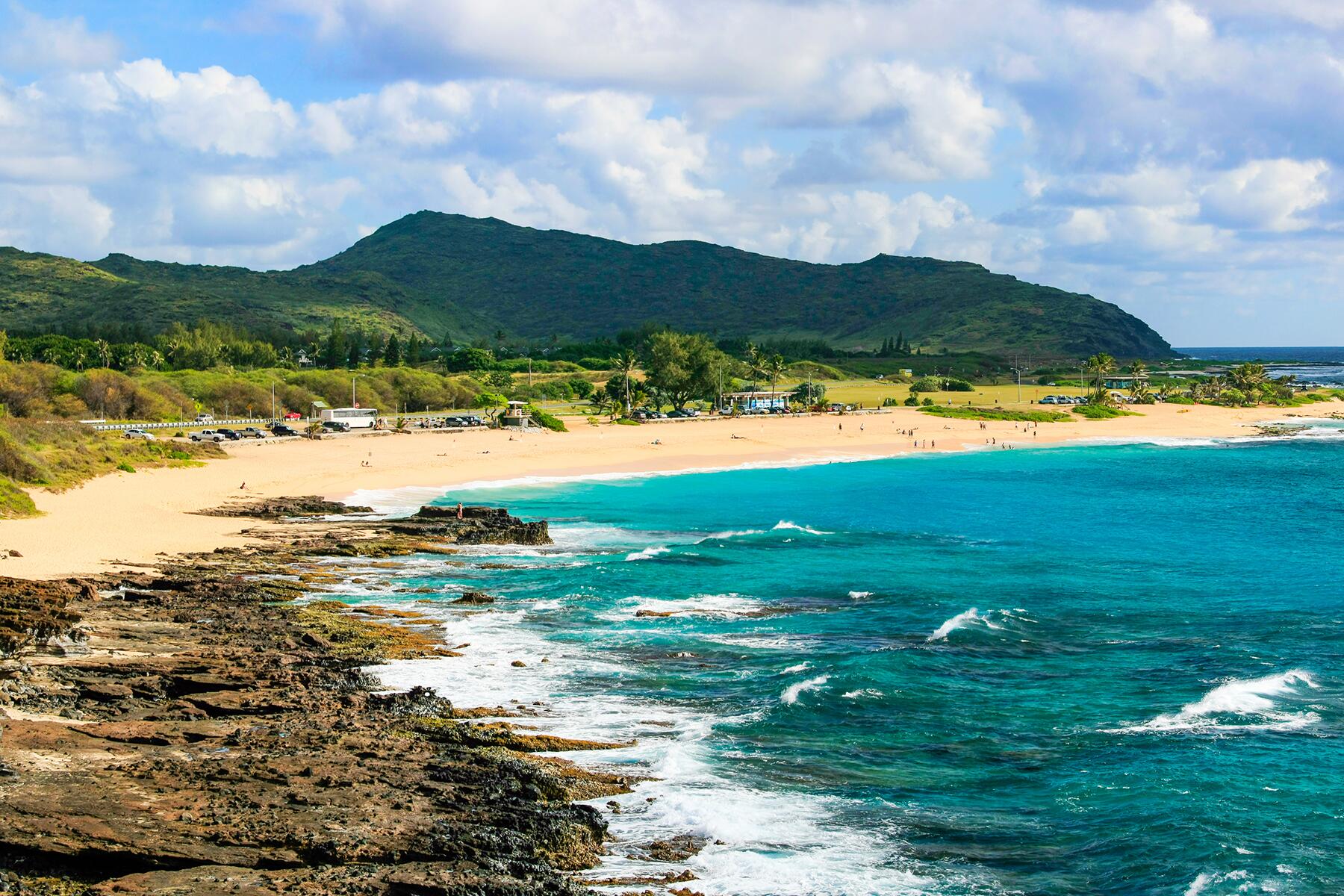The Inca Trail (Camino Inca in Spanish) is one of the world’s signature outdoor excursions. Though the journey by train is the easiest way to get to Machu Picchu, most travelers who arrive via the Inca Trail wouldn’t have done it any other way.

There are limits on the number of trail users, but you’ll still see a lot of fellow trekkers along the 50-km (31-mi) sector of the stone path that once extended from Cusco to Machu Picchu. The four-day trek takes you past ruins and through stunning scenery, starting in the thin air of the highlands and ending in cloud forests. The orchids, hummingbirds, Andean condors, and spectacular mountains aren’t bad either.
For more information, be sure to see our Machu Picchu Planning Basics.
Prepping for the Inca Trail
Guides Required: The days of setting off on the Inca Trail on your own, along with free-for-all rowdiness and litter, ended years ago. You must use a licensed tour operator, one accredited by the Unidad de Gestión Santuario Histórico de Machu Picchu, the organization that oversees the trail and limits the number of hikers to 400 per day, including guides and porters. There are some 30 such licensed operators in Cusco.
When to Go: May through September is the best time to make the four-day trek; rain is more likely in April and October and a certainty the rest of the year. The trail fills up during the dry high season. Make reservations months in advance if you want to hike then—weeks in advance the rest of the year. The trek is doable during the rainy season, but can become slippery and muddy by December. The trail closes for maintenance each February.
Recommended Fodor’s Video
Getting Ready: Tour operators in Cusco will tell you the Inca Trail is of "moderate" difficulty, but it can be rough going, especially the first couple of days. You must be in decent shape, even if your agency supplies porters to carry your pack—current regulations limit your load to 20 kg (44 lb). The trail is often narrow and hair-raising.
As the mountains sometimes rise to over 13,775 feet, be wary of altitude sickness. (Give yourself two or three days in Cusco or the Sacred Valley to acclimatize.)
Your gear should include sturdy hiking boots, a sleeping bag (some outfitters rent them); clothing for cold, rainy weather, a hat, and a towel. Also bring plenty of sunblock and mosquito repellent. Toilet paper is essential; walking sticks can be helpful.
There are seven well-spaced, designated campsites along the trail.
While You’re Hiking
Food: All operators have their own chefs that run ahead of you with the porters, set-up camp, and create culinary feasts for breakfast, lunch, and dinner. This will probably be some of the best camp food you’ll ever have and maybe some of the best food while in Peru. We’re talking quinoa porridge with blueberries, chicken soup, and gourmet pasta dishes.
Coca Leaves: Although after Day 2 it is a gradual descent into Machu Picchu, you’re still high enough to feel the thin air. You’ll notice porters chewing coca throughout the trek. It’s like drinking a cup of coffee. Coca leaves are a mild stimulant as well as an appetite, pain, and hunger suppressant. You’ll only need about one bag of your own (about S/1) for the trail. To properly enjoy the leaves, take about 15 of them and pick the stems off. Stack them on top of each other and roll into a tight little bundle. Place the bundle between your gum and cheek on one side, allowing the leaves to soften up for about two minutes. Eventually start chewing to let the juice out. It’s quite a bitter taste, but you’ll feel better. All tour operators will also serve tea during coca breaks.
Bathrooms: Toilets could be a lot worse. You won’t be able to sit down, but most porcelain-lined holes in the ground do flush. Bathrooms usually have working sinks, too. You must bring your own toilet paper wherever you go. Camp sites all have toilets, but the trail itself does not.
Luggage: Check with your tour operator before you go, and pack as lightly as possible. If you hire porters, they’re probably going to be carrying a lot more than just your things on their backs. An American-style backwoods backpack may not be the right piece of luggage—it weighs a lot on its own and is an awkward shape for the porters to incorporate into their massive bundles. A simple duffle bag is often best.
More on Peru Travel
Photo Credit: milehightraveler / iStockPhoto



